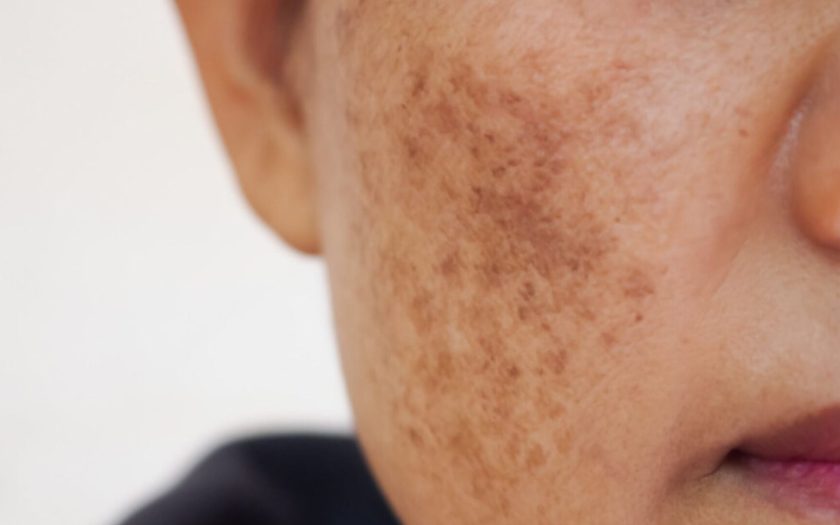Fact 1. This skin condition can be accompanied by a feeling of weakness in the body.
Although melasma is usually perceived as purely an aesthetic issue, its appearance can also be accompanied by general symptoms such as fatigue, decreased energy, and even a slight sense of exhaustion. This is because melasma often isn’t an isolated phenomenon—it can be an external signal of internal imbalances, such as hormonal disruptions, overwork, liver with problems, or adrenal gland dysfunction. In such cases, the body uses more resources to adapt to internal changes, which can lead to overall weakness. Additionally, noticeable changes in facial appearance can cause emotional tension, embarrassment, and insecurity, which further increases stress and wears down the nervous system. All of this may manifest as reduced vitality, sleep disturbances, and persistent fatigue. Therefore, when melasma appears, it is important not only to pay attention to cosmetic care but also to evaluate the overall state of the body—it could be signaling a need for rest, a change in diet, or even a consultation with an endocrinologist.
Fact 2. Melasma can affect not only women.
Despite being most commonly associated with women’s health, melasma can also occur in men. According to statistics, about 10% of melasma cases are recorded in men. In males, this condition is more often linked not to hormonal fluctuations but to other factors: prolonged sun exposure without protection, the use of harsh skincare products, genetic predisposition, or thyroid and liver dysfunctions. Additionally, pigmentation in men often appears somewhat differently and may be less noticeable but more resistant to treatment. Due to lower awareness of this condition, men are less likely to seek professional help, which complicates diagnosis and delays effective care. It is important to remember that everyone, regardless of gender, needs proper skincare—especially when prone to pigmentation issues.
Fact 3. Treating melasma can take a long time.
Melasma is not just a cosmetic flaw but a chronic skin condition that requires a comprehensive and long-term treatment approach. One of the most challenging aspects of this condition is the waiting period, as visible results usually do not appear until at least 4–8 weeks of consistent care, and full recovery may take several months—or even longer. Since pigment spots in melasma are located deep in the layers of the skin, conventional creams or masks may not be effective without a properly selected system. In most cases, a dermatologist prescribes external remedies (for example, Aziderm, Demelan, Melalong cream), antioxidants, soft peels, professional procedures and possibly laser treatment. Even after the pigmentation fades, it is essential to maintain proper skincare, as the condition tends to recur—especially under sun exposure or hormonal changes. One of the key elements in the fight against this problem is the daily use of SPF protection (for example, Daylong Extreme SPF 50+), regardless of the season or weather conditions.
Fact 4. Melasma often appears on the upper lip line.
One of the most common—and emotionally distressing—manifestations of melasma is the appearance of dark patches above the upper lip. Due to the specific location and shape, this pigmentation can resemble a shadow or “mustache,” causing particular discomfort for many women. Often, this zone becomes a source of self-consciousness, as it draws attention even in mild cases of melasma. The reasons why melasma frequently appears in this delicate area include the skin’s sensitivity to hormonal changes, sun exposure, and cosmetic procedures such as waxing or laser hair removal. Any irritation or damage to the skin in this area can trigger melanin production, which initiates the pigmentation process. To prevent worsening of the condition above the upper lip, it is crucial to avoid direct sunlight, use high-SPF creams, and choose hair removal and skincare methods carefully.

